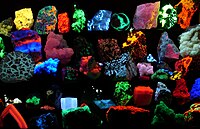
Photocatalytic properties of atomic layer deposited TiO2 inverse opals and planar films for the degradation of dyes
Sign Up to like & getrecommendations! Published in 2020 at "Applied Surface Science"
DOI: 10.1016/j.apsusc.2020.145693
Abstract: Abstract The pollution of waste water due to organic dyes used in textile and chemical industries is an important environmental issue. Inverse opals (IO) offer a great potential for increasing the efficiency of semiconductor photocatalysts… read more here.
Keywords: degradation; atomic layer; properties atomic; inverse opals ... See more keywords

Angle dependence in slow photon photocatalysis using TiO2 inverse opals
Sign Up to like & getrecommendations! Published in 2018 at "Chemical Physics"
DOI: 10.1016/j.chemphys.2018.01.007
Abstract: Abstract The slow photon effect was studied by means of the photocatalytic degradation of stearic acid over TiO 2 inverse opals. The comparison of the degradation rates over inverse opals with those obtained over disordered… read more here.
Keywords: angle dependence; irradiation; slow photon; dependence slow ... See more keywords
Fabrication of composite Cu2O/Au inverse opals for enhanced detection of hydrogen peroxide: Synergy effect from structure and sensing mechanism
Sign Up to like & getrecommendations! Published in 2021 at "Journal of Alloys and Compounds"
DOI: 10.1016/j.jallcom.2021.161243
Abstract: Abstract Composite Cu2O/Au inverse opals are fabricated by pulse electrodeposition of Cu2O on the skeletons of Au inverse opals, and their H2O2 sensing performances are investigated in a phosphate buffered saline solution. In our composite… read more here.
Keywords: inverse opals; cu2o; cu2o inverse; composite cu2o ... See more keywords

Optical and electrochemical properties of 3D nanoporous Cu2O–Cu inverse opal structures tuned by electrodeposition
Sign Up to like & getrecommendations! Published in 2021 at "Materials Science in Semiconductor Processing"
DOI: 10.1016/j.mssp.2020.105444
Abstract: Abstract Three-dimensional (3D), ordered nanoporous Cu2O and Cu inverse opal structures are attractive for various applications in photonics and catalysis. Here, we demonstrate an approach to fabricate 3D nanoporous inverse opals by electroplating through a… read more here.
Keywords: inverse opals; inverse opal; inverse; nanoporous cu2o ... See more keywords

Highly efficient CO2 reduction on ordered porous Cu electrode derived from Cu2O inverse opals
Sign Up to like & getrecommendations! Published in 2018 at "Nano Energy"
DOI: 10.1016/j.nanoen.2018.03.023
Abstract: Abstract Electrochemical reduction of CO2 to fuels is a promising way to reduce CO2 emission and address the environment and energy crisis. However, the H2 evolution reaction competes with CO2 electrochemical reduction, which would lower… read more here.
Keywords: reduction; co2 reduction; cu2o inverse; inverse opals ... See more keywords

Photonic crystal based biosensors: Emerging inverse opals for biomarker detection
Sign Up to like & getrecommendations! Published in 2020 at "Talanta"
DOI: 10.1016/j.talanta.2020.121615
Abstract: Photonic crystal (PC)-based inverse opal (IO) arrays are one of the substrates for label-free sensing mechanism. IO-based materials with their advanced and ordered three-dimensional microporous structures have recently found attractive optical sensor and biological applications… read more here.
Keywords: detection; photonic crystal; inverse opals; based biosensors ... See more keywords

Evaporation-Induced Self-Assembly of Metal Oxide Inverse Opals: From Synthesis to Applications
Sign Up to like & getrecommendations! Published in 2022 at "Accounts of Chemical Research"
DOI: 10.1021/acs.accounts.2c00087
Abstract: Conspectus Inverse opals (IOs) are highly interconnected three-dimensional macroporous structures with applications in a variety of disciplines from optics to catalysis. For instance, when the pore size is on the scale of the wavelength of… read more here.
Keywords: inverse opals; metal oxide; microscopy; self assembly ... See more keywords

Photoinduced Charge Transfer in Poly(3-hexylthiophene)/TiO2 Hybrid Inverse Opals: Photonic vs Interfacial Effects
Sign Up to like & getrecommendations! Published in 2017 at "Journal of Physical Chemistry C"
DOI: 10.1021/acs.jpcc.7b09113
Abstract: We study the effects of tailored light–matter interactions on charge transfer in conjugated polymer films. We use inverse opal structures of titania as the electron acceptor and the model polymer poly(3-hexylthiophene) (P3HT) as the electron… read more here.
Keywords: inverse opals; charge transfer; poly hexylthiophene; inverse ... See more keywords

Evaluation of Silk Inverse Opals for “Smart” Tissue Culture
Sign Up to like & getrecommendations! Published in 2017 at "ACS Omega"
DOI: 10.1021/acsomega.6b00320
Abstract: Visually tracking the subtle aspects of biological systems in real time during tissue culture remains challenging. Herein, we demonstrate the use of bioactive, cytocompatible, and biodegradable inverse opals from silk as a multifunctional substrate to… read more here.
Keywords: tissue culture; evaluation silk; tissue; inverse opals ... See more keywords

Tetrahedral framework of inverse opal photonic crystals defines the optical response and photonic band gap
Sign Up to like & getrecommendations! Published in 2018 at "Journal of Applied Physics"
DOI: 10.1063/1.5033367
Abstract: By forming anatase TiO2 inverse opals by infiltration of an opal photonic crystal, we demonstrate that the optical response and angle-resolved blue-shift of the band-gap of the inverse opal structure are defined by a particular… read more here.
Keywords: band gap; inverse opal; inverse opals; inverse ... See more keywords

Synthesis, Structure, and Electrochemical Characteristics of Carbon Inverse Opals
Sign Up to like & getrecommendations! Published in 2018 at "Inorganic Materials: Applied Research"
DOI: 10.1134/s2075113318010264
Abstract: Carbon structures with inverse opal lattice modified with nickel compounds are synthesized. The thermal treatment effect on phase composition of compounds is studied. The electrochemical characteristics of carbon structures as electrode materials in supercapacitors are… read more here.
Keywords: structure electrochemical; electrochemical characteristics; carbon inverse; inverse opals ... See more keywords